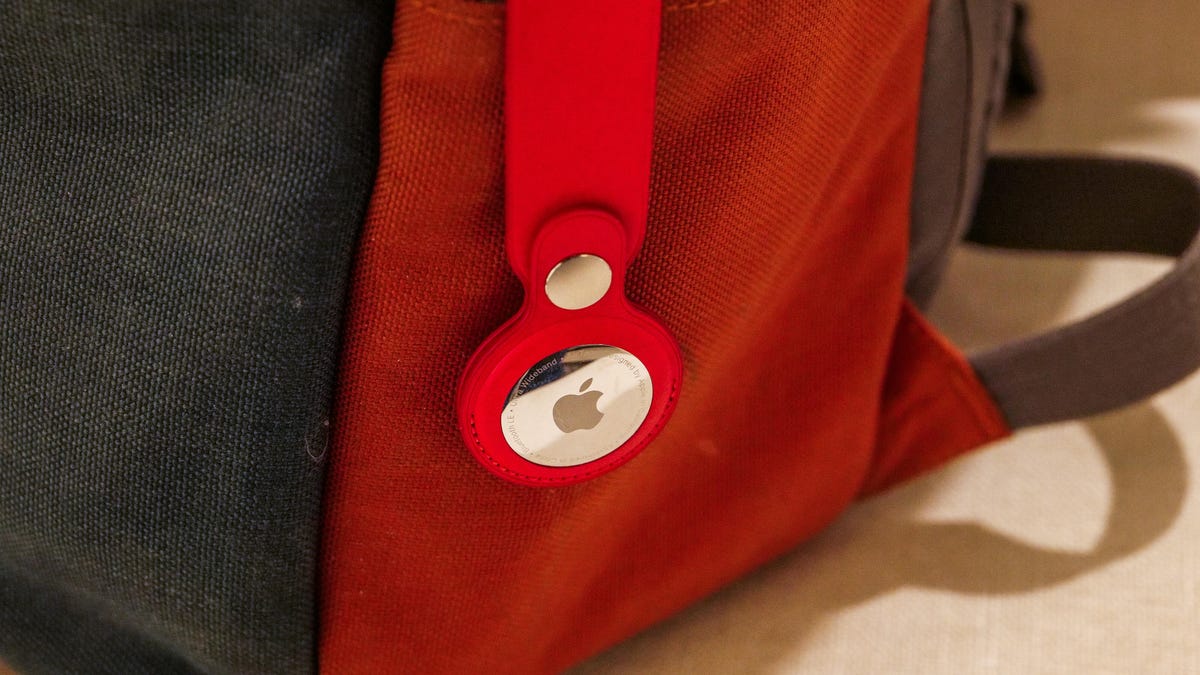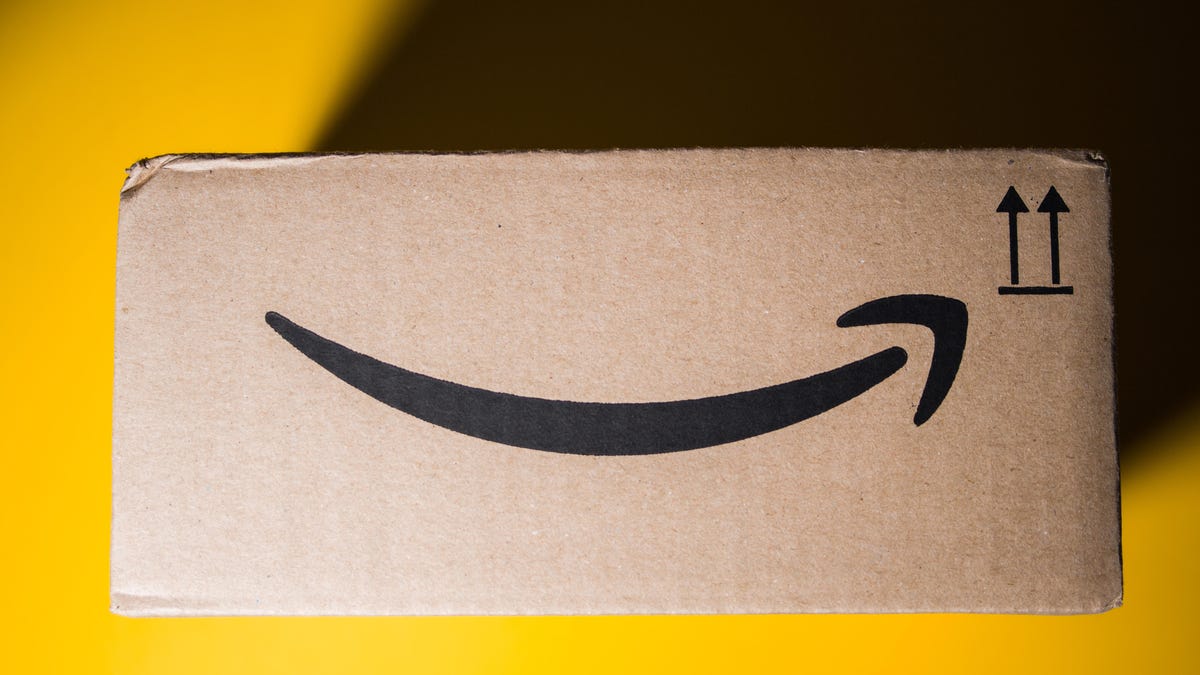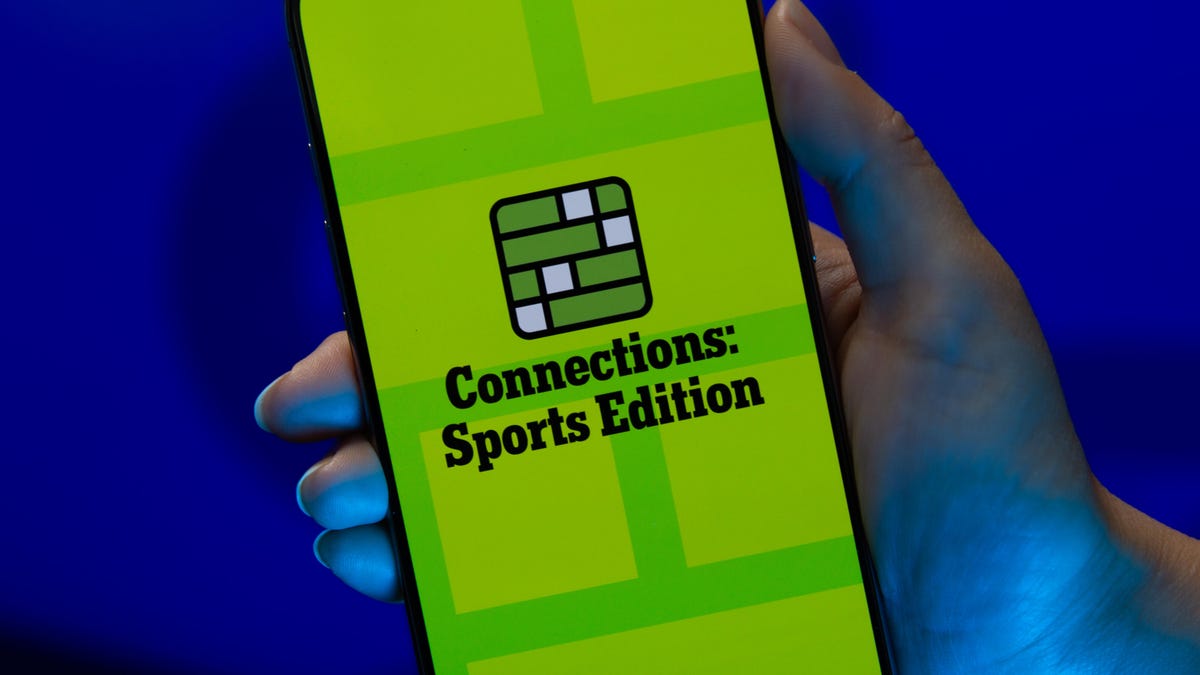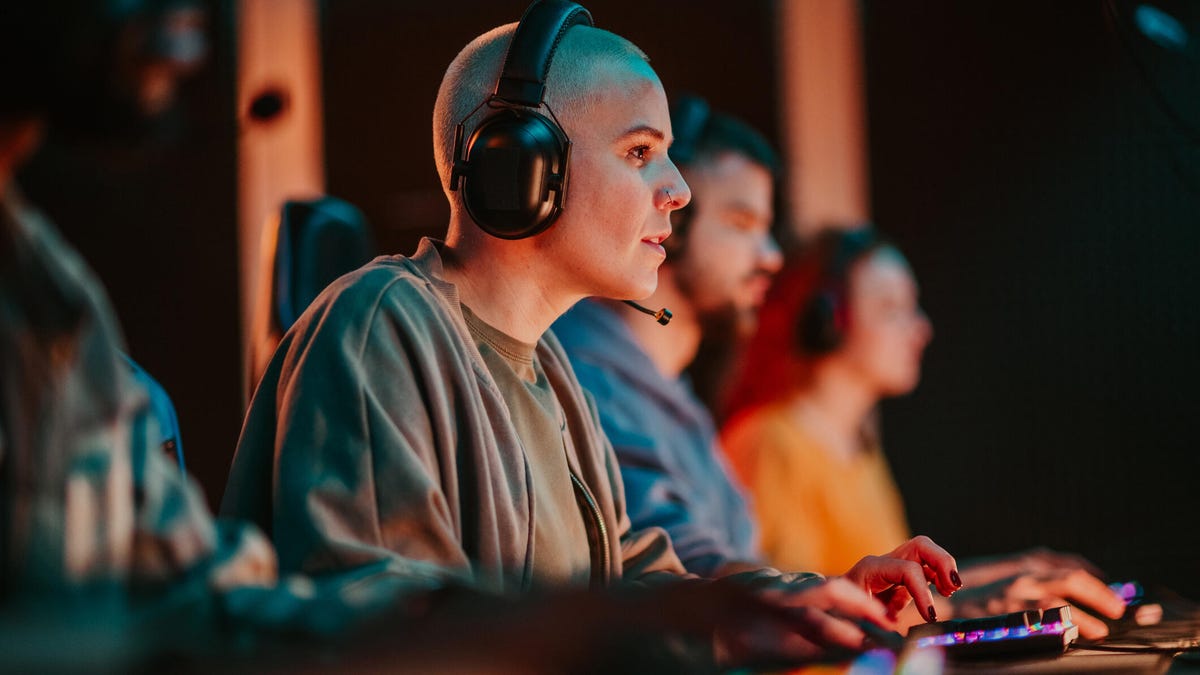Technologies
I Use Apple AirTags to Track Everything From My Luggage to My Keys, and a 4-Pack Is Down to Just $68 for Prime Day
This is the lowest I’ve seen this year, so if you’re planning a vacation anytime soon, now is a good time to stock up on these trackers.

Amazon Prime Day sale: Apple’s AirTags are available right now on Amazon for $68 for a four-pack during Amazon’s July Prime Day sale event. That brings them down to $17 each, which is close to the lowest price we’ve seen, but we don’t expect this deal to stick around.
Not long ago, as I waited at baggage claim after a trip to Paris, I became increasingly nervous as bag after bag dropped onto the carousel, none of them mine. I knew there was no need to panic, though. Back at Charles de Gaulle airport, I had dropped a sophisticated little tracking device into my trusty rolling suitcase before handing it over and heading to my gate. So, I pulled out my iPhone and, with just a few taps, I could see that my bag had never left the City of Light. (Merde!)
Over the years, I’ve come to depend on Apple’s AirTags to keep track of many types of easy-to-lose valuables. They’re not just good for luggage. I also use them to track wallets, bikes, keys and even my car. I tell everyone who will listen that you can never have too many of these handy devices.
Here’s how the Apple AirTag (like the one that was in my suitcase on that fateful trip) works. It uses an ingenious method of tracking itself, detecting its location from nearby iPhones and using them to anonymously piggyback the coordinates to a secure server where I could look it up on my iPhone. Until just a few years ago, this would have seemed like a scene straight out of a spy movie.
Hey, did you know? CNET Deals texts are free, easy and save you money.
Instead of wondering if my belongings were stuck on an abandoned luggage cart or strewn across the tarmac, I could see in almost real time that my suitcase was still chilling at Charles de Gaulle airport in Paris. I was able to calmly tell the airline my bag didn’t make the flight, and it made arrangements to have it delivered to me a few days later.
Apple AirTags are all about peace of mind
By itself, an AirTag isn’t much. A smooth, round, 1.26-inch puck that looks like a glossy white breath mint, it sinks to the bottom of a bag or dangles from a key chain (with a compatible key ring, sold separately). It’s meant to disappear.
Activating the AirTag was a simple process of pairing with my iPhone. And then, because it obviously doesn’t really do anything out of the box, I forgot about it.
But the next time I couldn’t find my keys? Sorcery. My iPhone didn’t just tell me they were somewhere nearby — it walked me directly to them, thanks to the AirTag’s built-in Ultra Wideband chip. Suddenly, all that time I’d spent retracing my steps and overturning couch cushions in the past felt like ancient history.
Now I have AirTags in or attached to every significant item I’d want to keep track of: My everyday laptop bag, my camera backpack, the suitcase I use most when traveling, my key chain, my car and a smaller sling bag I take on walks. I can pull up the Find My app on any of my Apple devices (or sign in to iCloud on any web browser) and see where my items are and the last time the AirTags registered their locations.
AirTags aren’t just for my everyday items. People I know in the movie business tell me that AirTags are tossed into nearly every bag and Pelican crate, not solely to ensure that the valuable equipment inside doesn’t walk away but also to quickly differentiate equipment amid similar-looking containers. Some of my friends also attach AirTags to their pets’ collars (though experts say there are better ways to track your pets).
AirTags are also useful for things that you want to keep close by
Being able to detect my luggage a continent away provided a sense of relief, to be sure. But at the local level, my AirTags will also trigger an alert when I get too far away from them. For example, if I accidentally forget my camera bag in the car when I stop somewhere for lunch, a Find My notification appears telling me I’ve left it behind. It works the same for newer AirPods models as well.
Sharing is now a big part of AirTag tracking
My family has two cars, and I wanted to be able to track them both. But it used to be inconvenient to pair the AirTag in the car my wife drives to her iPhone (and the one in my car to my iPhone).
To guard against unwanted tracking, an AirTag will notify nearby iPhones of its existence, so whenever I drove my wife’s car without her in it, I got a notification that an AirTag was traveling with me. (If the owner is near the AirTag, the alert does not appear.)
However, ever since the release of iOS 17, AirTags are shareable, which solves this problem. I shared my AirTag with my wife, and she with me, so regardless of which car I’m driving, I can find it more easily in a crowded parking lot without getting constant, unnecessary alerts.
A more recent feature is the ability to temporarily share an AirTag’s location with someone I trust. In my luggage example above, if the suitcase was in the airport with me, but the airport’s staff hadn’t yet been able to locate it (not uncommon during peak travel times), I could share its location with an attendant who could quickly retrieve it from areas inaccessible to the public.
Apple AirTag specs
- Diameter: 1.26 inches (31.9 mm)
- Height: 0.31 inches (8 mm)
- Weight: 0.39 ounces (11 g)
- Splash, water and dust resistance: Rated IP67 (maximum depth of 1 meter up to 30 minutes)
- Connectivity: Bluetooth 5.0
- Battery: Replaceable CR2032 coin cell battery
The only minor annoyance about AirTags
An AirTag includes Bluetooth, the U1 Ultra Wideband chip and an NFC chip to share basic details when it’s in Lost Mode. That’s all powered by a CR2032 coin cell battery, which in my experience lasts roughly a year before I need to replace it.
I get notified when a battery is starting to get low, although there’s no gauge to see how much is left until it goes into the red. And it’s easy to change batteries. But my small fleet of AirTags means I need to swap multiple ones each year. I buy them in packs of 20 that I slowly work through.
AirTags also make great gifts
Apple AirTags consistently appear in our gift guides throughout the year because you can always find another use for one. They’re often reduced in price when sold in packs of four. And there’s an ever-growing ecosystem of ways to mount them, from sturdy vaults that adhere to a car to discrete fabric holders that will keep your favorite classic bomber jacket from flying away. Whenever I show someone how I use AirTags on a bag or keychain, I kind of wish I had a pocket full of AirTags to hand out because once someone sees how it works, they’re sold.
When will this deal expire?
We don’t know how long this deal will last. We saw four-packs available at this discounted price earlier this year, but it could expire at any time without notice. I recommend placing your order while you can be sure to get this price, because I’m confident you’ll find new uses for them once you have a few.
Technologies
If You Were ‘Tricked’ Into an Amazon Prime Subscription, You Should Have Been Paid by Today
Amazon is paying $1.5 billion to people who mistakenly subscribed to Prime, and the first round of payments are due today.

Amazon Prime provides a lot of valuable benefits to its members, but the company’s registration practices for its premium subscription from 2019 to 2025 led to many customers accidentally subscribing to a service they didn’t want.
Amazon is now paying the price for that deception — the US Federal Trade Commission levied a massive $2.5 billion settlement on the company for its subscription tactics.
The majority of the settlement — $1.5 billion — has been earmarked to refund eligible subscribers, with the rest serving as a civil penalty. Amazon is also now legally required to provide a clear, obvious option to decline Prime, making it as easy to leave the service as it is to join.
Amazon isn’t admitting to shady behavior. «Amazon and our executives have always followed the law, and this settlement allows us to move forward and focus on innovating for customers,» Mark Blafkin, Amazon senior manager, said in a statement. «We work incredibly hard to make it clear and simple for customers to both sign up or cancel their Prime membership, and to offer substantial value for our many millions of loyal Prime members around the world.»
The online retail giant started sending out payments to eligible people in November and was supposed to conclude its initial automatic payments today, Dec. 24. Read on to learn more about Amazon’s settlement and what to do if you think you’re eligible for compensation but didn’t receive a payment.
Why did the FTC fine Amazon?
The FTC filed suit against Amazon, accusing the company of using «dark patterns» to nudge people into Prime subscriptions and then making it too hard to cancel. The FTC maintained Amazon was in violation of Section 5 of the FTC Act and the Restore Online Shoppers’ Confidence Act.
«Specifically, Amazon used manipulative, coercive or deceptive user-interface designs known as ‘dark patterns’ to trick consumers into enrolling in automatically renewing Prime subscriptions,» the FTC complaint stated.
Who’s eligible for Amazon’s payout?
Amazon’s legal settlement is limited to customers who enrolled in Amazon Prime between June 23, 2019, and June 23, 2025. It’s also restricted to customers who subscribed to Prime using a «challenged enrollment flow» or who enrolled in Prime through any method but were unsuccessful in canceling their memberships.
The FTC called out specific enrollment pages, including Prime Video enrollment, the Universal Prime Decision page, the Shipping Option Select page and the Single Page Checkout. To qualify for a payout, claimants must also not have used more than 10 Amazon Prime benefits in any 12-month period.
Customers who signed up via those challenged processes and did not use more than three Prime benefits within one year will be paid automatically by Amazon within 90 days. Other eligible Amazon customers will need to file a claim, and Amazon is required to send notices to those people within 30 days of making its automatic payments.
If you are eligible for the automatic payment, you should have received an email from Amazon by today explaining how to claim the money. You can be paid via PayPal or Venmo. If you prefer a paper check, don’t accept the digital payment. The FTC says Amazon will mail you a check that you must cash within 60 days.
How big will the Amazon payments be?
Payouts to eligible Amazon claimants will be limited to a maximum of $51. That amount could be reduced depending on the number of Amazon Prime benefits you used while subscribed to the service. Those benefits include free two-day shipping, watching shows or movies on Prime Video or Whole Foods grocery discounts.
Customers who qualify for the payments should have received them from Nov. 12 to Dec. 24, 2025.If you are eligible for compensation from Amazon but didn’t receive a payout, you’ll need to file a claim after Amazon starts the claim process. The FTC says it will update its Amazon settlement site once that process has begun.
Customers who did not use a challenged sign-up process but instead were unable to cancel their Prime memberships will also need to file claims for payment.
Technologies
Today’s NYT Connections: Sports Edition Hints and Answers for Dec. 25, #458
Here are hints and the answers for the NYT Connections: Sports Edition puzzle for Dec. 25, No. 458.

Looking for the most recent regular Connections answers? Click here for today’s Connections hints, as well as our daily answers and hints for The New York Times Mini Crossword, Wordle and Strands puzzles.
Today’s Connections: Sports Edition has a real mix of categories, including one that’s all about a certain famous athlete. If you’re struggling with today’s puzzle but still want to solve it, read on for hints and the answers.
Connections: Sports Edition is published by The Athletic, the subscription-based sports journalism site owned by The Times. It doesn’t appear in the NYT Games app, but it does in The Athletic’s app. Or you can play it for free online.
Read more: NYT Connections: Sports Edition Puzzle Comes Out of Beta
Hints for today’s Connections: Sports Edition groups
Here are four hints for the groupings in today’s Connections: Sports Edition puzzle, ranked from the easiest yellow group to the tough (and sometimes bizarre) purple group.
Yellow group hint: Swing away!
Green group hint: What’s that on your bat?
Blue group hint: Catch the football.
Purple group hint: Lake Placid or Lillehammer.
Answers for today’s Connections: Sports Edition groups
Yellow group: Baseball bat materials.
Green group: Associated with George Brett.
Blue group: NFL rookie WRs.
Purple group: Olympic ____.
Read more: Wordle Cheat Sheet: Here Are the Most Popular Letters Used in English Words
What are today’s Connections: Sports Edition answers?
The yellow words in today’s Connections
The theme is baseball bat materials. The four answers are aluminum, ash, birch and maple.
The green words in today’s Connections
The theme is associated with George Brett. The four answers are 5, pine tar, Royals and third base.
The blue words in today’s Connections
The theme is NFL rookie WRs. The four answers are Burden, Egbuka, Golden and McMillan.
The purple words in today’s Connections
The theme is Olympic ____. The four answers are Games, rings, torch and village.
Don’t miss any of our unbiased tech content and lab-based reviews. Add CNET as a preferred Google source.
Technologies
Christmas Eve Gaming Crushed as Steam Goes Offline
Services related to the popular game hub seem to slowly be returning as of Wednesday afternoon.

Your Christmas Eve gaming session might not go as planned. Online gaming hub Steam went down on Wednesday. As of about 1:30 pm PT, the Steam store page was once again accessible, so services seemed to be coming back online.
The Steam outage appeared to begin mid-afternoon ET, according to Downdetector, which monitors site outages. (Disclosure: Downdetector is owned by the same parent company as CNET, Ziff Davis.)
A representative for Steam did not immediately respond to a request for comment.
As of Wednesday noon PT, Steam’s official X and Bluesky accounts hadn’t posted anything about the outage.
Gamers certainly noticed. «Steam down, Steam down!!!» wrote one Bluesky user.
Others commented on the bad timing just as gamers were enjoying time off or receiving gaming gifts. «‘You got a gift on Steam!’ oh cool ‘Steam is down’ oh cool,» wrote another Bluesky user.
-

 Technologies3 года ago
Technologies3 года agoTech Companies Need to Be Held Accountable for Security, Experts Say
-

 Technologies3 года ago
Technologies3 года agoBest Handheld Game Console in 2023
-

 Technologies3 года ago
Technologies3 года agoTighten Up Your VR Game With the Best Head Straps for Quest 2
-

 Technologies4 года ago
Technologies4 года agoBlack Friday 2021: The best deals on TVs, headphones, kitchenware, and more
-

 Technologies4 года ago
Technologies4 года agoVerum, Wickr and Threema: next generation secured messengers
-

 Technologies4 года ago
Technologies4 года agoGoogle to require vaccinations as Silicon Valley rethinks return-to-office policies
-

 Technologies4 года ago
Technologies4 года agoOlivia Harlan Dekker for Verum Messenger
-

 Technologies4 года ago
Technologies4 года agoiPhone 13 event: How to watch Apple’s big announcement tomorrow
